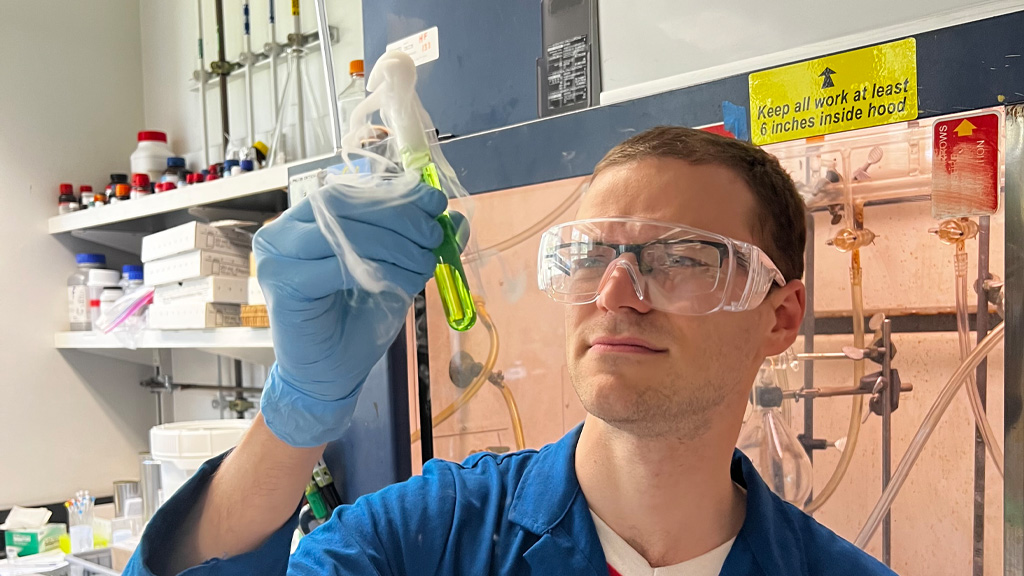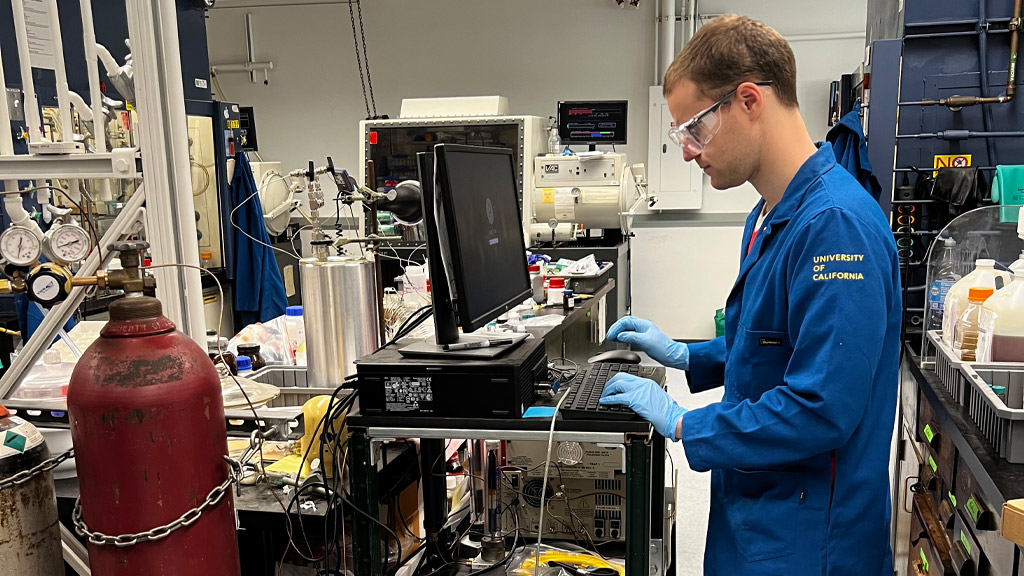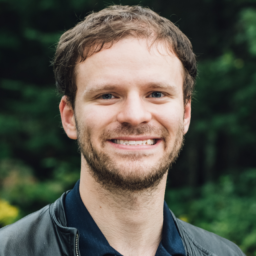Kurtis Carsch Wins Hertz Thesis Prize for Advancements in Pharmaceutical Chemistry

More than eight of every ten drugs created by pharmaceutical companies today contain at least one nitrogen atom, often attached to a nearby atom of carbon. But these reactions frequently require notoriously difficult and costly chemical reagents, rely on rare earth elements, and generate toxic waste.
Kurtis Carsch, a 2016 Hertz Fellow with support from the National Science Foundation, spent five years studying carbon-nitrogen bond formation reactions using earth-abundant resources. He discovered and provided substantial insight into how to bypass some of the most wasteful and energy-intensive steps of typical carbon-nitrogen bond formation, and eliminate the dependence on rare metals.
Carsch’s new chemical reactions are described in his Harvard University thesis, “Ligand Field Inversion in Sterically Confined Copper Architectures,” for which the Hertz Foundation awarded him the 2021 Hertz Thesis Prize.
“There was not only a lot of waste generated with these standard methods, but some real geopolitical and sustainability challenges associated with obtaining the rare elements they required,” said Carsch, who carried out the work in the lab of Harvard chemistry professor Theodore Betley. “So, being able to switch the chemistry to operate with universal resources is really in our best interest for many reasons.”
The Hertz Thesis Prize recognizes fellows who publish exemplary doctoral theses with applications to real-world problems, and Carsch joins more than 60 fellows who have been previously recognized with the award. Winners are chosen by a vibrant and committed group of volunteers, consisting of previous Hertz Fellows, who serve as Thesis Reviewers on the Hertz Prize Committee. Carsch’s work was chosen for its potential to streamline pharmaceutical chemistry.
Nitrogen is a key atom in living organisms and is often irreplaceable in the structure of drugs; it forms strong bonds with carbon and can carry out important chemistry at the pH of the human body. But, for decades, scientists have relied on three metals—palladium, platinum or ruthenium—to help spur nitrogen and carbon to bind. Once these metals have catalyzed the chemical connection, toxic byproducts are left behind that require extensive and costly separations.
Scientists had known for decades that there might be other ways of catalyzing nitrogen-carbon bonds, but the methods were poorly understood and not typically used by pharmaceutical chemists. Carsch set out to reveal exactly how these alternate pathways worked—a task that he called “very ambitious.”
“It wasn’t obvious that I was going to make any tangible progress with this project in a year, or even my entire doctoral studies,” he said. “Having the Hertz fellowship let me tackle this big, challenging problem without feeling like I was wasting someone’s time or money if it didn’t work right away.”
Carsch’s research focused on how copper, a ubiquitous element, could replace the other metals in nitrogen-carbon bond reactions. Slowly, he tackled each step of the process, optimizing what was required and characterizing each resulting chemical in detail. Often, he said, he hit dead ends and had to backtrack and create new approaches to get the chemistry right. Some of his most crucial breakthroughs were serendipitous.
“I would run a reaction and not get the result that I intended, but what actually happened often is that studying that unintentional outcome helped me learn something new about chemistry and lead me to a better solution,” Carsch said.
In 2019, he published the first steps of the research in the journal Science, describing the chemistry of a copper nitrene, which is an important intermediate in the process of making carbon-nitrogen bonds. His research was conducted in collaboration with Cornell University professor Kyle Lancaster. In his thesis, Carsch described additional steps in forming the carbon-nitrogen bonds required in pharmaceutical compounds.

“Now we can run these two reactions side by side—the existing way and our new way—and show how much faster and more efficient our way is,” said Carsch. He did not work directly with pharmaceutical companies, but hopes that, due to his efforts in describing the more efficient reactions, chemists in the pharmaceutical industry will begin to use them in the near future.
Carsch grew up in Bellevue, Washington, and credits Legos for his early interest in building new chemicals. As a 16-year-old, he attended a two-year, early-college program at the Texas Academy for Mathematics and Science, where he explored the transformation of natural gas into commodity chemicals. He delved deeper into experimental and theoretical chemistry as an undergraduate at the California Institute of Technology (Caltech), and worked at a startup company, SAFCell, as well as Honeywell UOP, before receiving his doctoral degree.
Last year, after finishing his work at Harvard, Carsch began a postdoctoral fellowship at the University of California, Berkeley, under the mentorship of chemist Jeffrey Long, with funding provided by the Arnold O. Beckman Foundation. He’s still focusing on how to make industrial processes more efficient, with an eye toward reducing pollution and energy consumption.
“Globally, we spend ten to fifteen percent of our energy budget on chemical separations, with techniques such as distillation, to get chemicals in pure forms,” said Carsch. “There are prime opportunities to replace many of these processes with alternative technologies that operate in a more mild and energy-efficient regime.”
About the Hertz Foundation
The Fannie and John Hertz Foundation identifies the nation’s most promising innovators in science and technology and empowers them to pursue solutions to our toughest challenges. Launched in 1963, the Hertz Fellowship is the most prestigious fellowship program in the U.S., fueling more than 1,200 leaders, disruptors and creators who apply their remarkable talents where they’re needed most — from our national security to the future of health care. Hertz Fellows hold 3,000+ patents, have founded 375+ companies, and have received 200+ major national and international awards, including two Nobel Prizes, eight Breakthrough Prizes, the National Medal of Technology, the Fields Medal and the Turing Award. Learn more at HertzFoundation.org.
